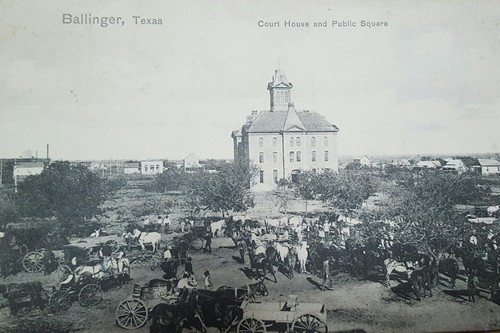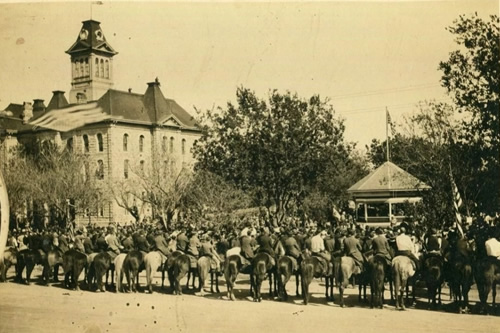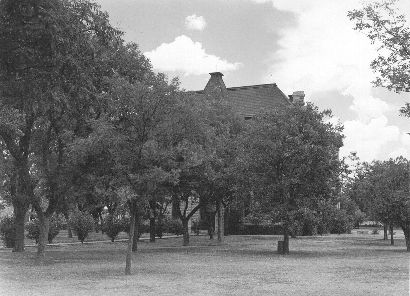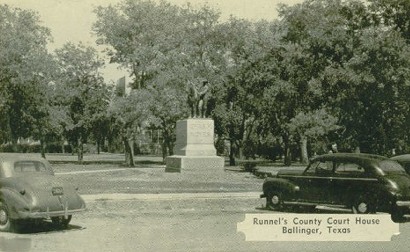Runnels County Courthouse, Ballinger, TX history, vintage & new photos, travel & more. (original) (raw)
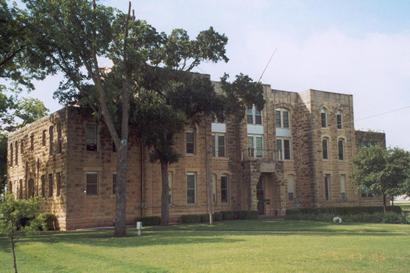
The 1889 Runnels County Courthouse today
US Hwy 83 & 67
Photo courtesy Terry Jeanson, May 2005
RUNNELS COUNTY COURTHOUSE HISTORY
To better handle the advance on the Texas frontier in this area, the state legislature formed twenty-three new counties on February 1, 1858, including Runnels County, but lack of protection from the area�s Indian population kept the county from being officially organized until February 16, 1880.
The county was named for Texas legislator and former governor of Mississippi, Hiram George Runnels. His nephew, Hardin Richard Runnels, was elected governor of Texas (defeating his opponent Sam Houston) and served from 1857 to 1859.
The town of Walthall was formed around 1875 about four to five miles southeast of Ballinger and served as the first county seat for a month, from March to April, 1880. The stone house of the local pastor Thomas W. Cotten served as a temporary courthouse before the new county seat, Runnels City, was established that same year at the center of the county, five miles north of Ballinger on Elm Creek. The county�s first courthouse was built there in 1880. It was a rock house with an adjoining jail built on land donated by William Guest. When the Gulf, Colorado and Santa Fe Railway built into the county in 1886, west from Brownwood, the town of Ballinger was established south of Runnels City at the junction of Elm Creek and the Colorado River. The enticement of a superior water supply and offers of free property by the railroad to any citizen of Runnels City who would move their home there and to any church that would erect a building there, forced the move of the county seat to Ballinger in 1888. Originally called Gresham, and then Hutchings (after Santa Fe Railroad stockholders Walter Gresham and John H. Hutchings,) the town was eventually named for William Pitt Ballinger, a Galveston attorney and stockholder in the Gulf, Colorado and Santa Fe Railway. Ballinger�s daughter, Betty, would later organize the Daughters of the Republic of Texas.
The second (and current) courthouse was constructed in Ballinger between 1888 and 1889 in the center of a two-block square set aside by the Santa Fe Railroad and remains one of the largest courthouse squares in Texas. The courthouse was designed by Houston architect Eugene T. Heiner and built by contractor Tom Lovell. The Second Empire style building, with Italianate influences, utilized local stone in its construction and was accented with sheet metal work and Mansard roofs. The design mimicked other courthouses designed by Heiner at the time, most notably the 1888 Falls County courthouse, the 1888 Austin County courthouse (both no longer standing) and the 1889 Wharton County courthouse (still in use and restored to its original condition.) In 1941 the courthouse underwent an extensive remodeling under the direction of architect Roy Lane of Dallas and contractor Oscar Rose. Two-story wings were built onto the east and west ends of the building with matching stone and the original stone was sandblasted to blend in with the new wings. The wood framed roof and central cupola were removed and replaced with a flat, steel roof. The interior of the courthouse was renovated at this time as well, including the dropping of the ceiling in the district courtroom. Despite the changes, much of the historic fabric of the building is still intact and the courthouse remains an important focal point of the community.
-
Terry Jeanson, September 15, 2013
Sources:
County history and biographical information from The Handbook of Texas Online. Courthouse information from The Texas Historical Commission�s County Atlas at http://atlas.thc.state.tx.us/shell-county.htm

Runnels County Courthouse Historical Marker
Photo courtesy Terry Jeanson, May 2005
Historical Marker:
Runnels County Courthouse
Constructed here, 1888-89, after hotly contested battle with Runnels City for county seat. (County had been organized 1880.)
Structure stands on one of largest courthouse squares in Texas -- 2 city blocks. Plot set aside prior to town lot sale by Santa Fe Railroad, June 29, 1886.
In 1941, extensive remodeling modernized building. Two wings were added and old quarry (south of town on Colorado River) was opened to provide matching stone.
Recorded Texas Historic Landmark - 1967
The Runnels County Courthouse and courthouse square in 1909.
Note original Mansard roof and towers which were removed in the 1941 remodelling
Click on image to enlarge
Photo courtesy Danny Whatley Collection
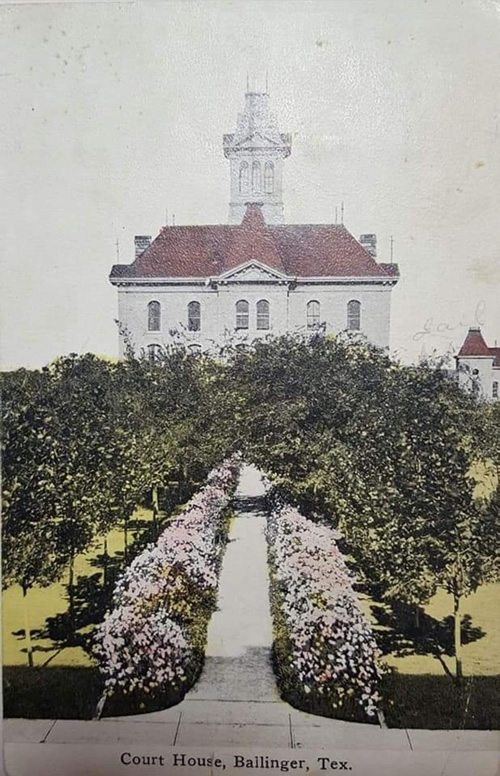
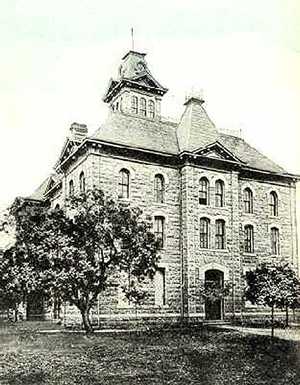
Runnels County Courthouse before remodelling in 1941Postcard courtesy texasoldphotos.com
The Runnels County Courthouse as it appeared in 1939
Photo courtesy TXDoT
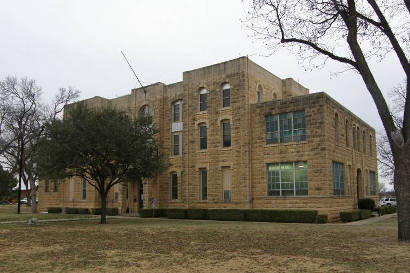
Runnels County Courthouse in 2009
Photo courtesy Barclay Gibson, December 2009
1940s image of the Runnels County Courthouse.
Note the Charles Noyes' statue in the courthouse square
Postcard courtesy rootsweb.com/ %7Etxpstcrd/

